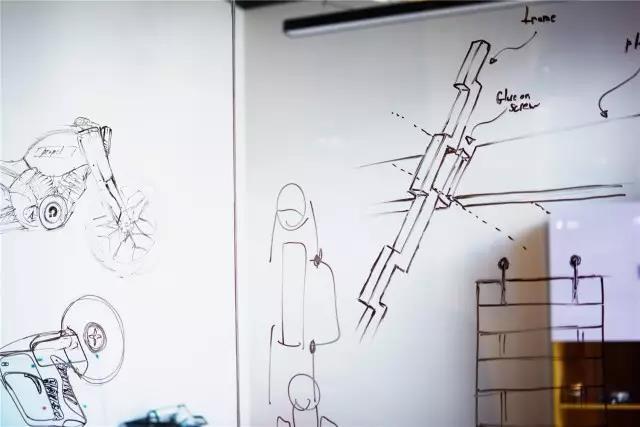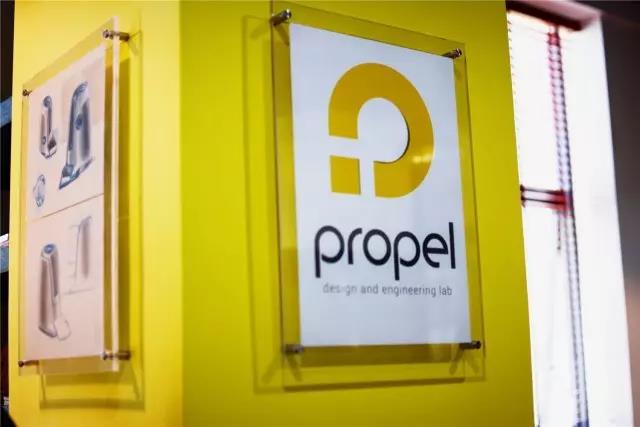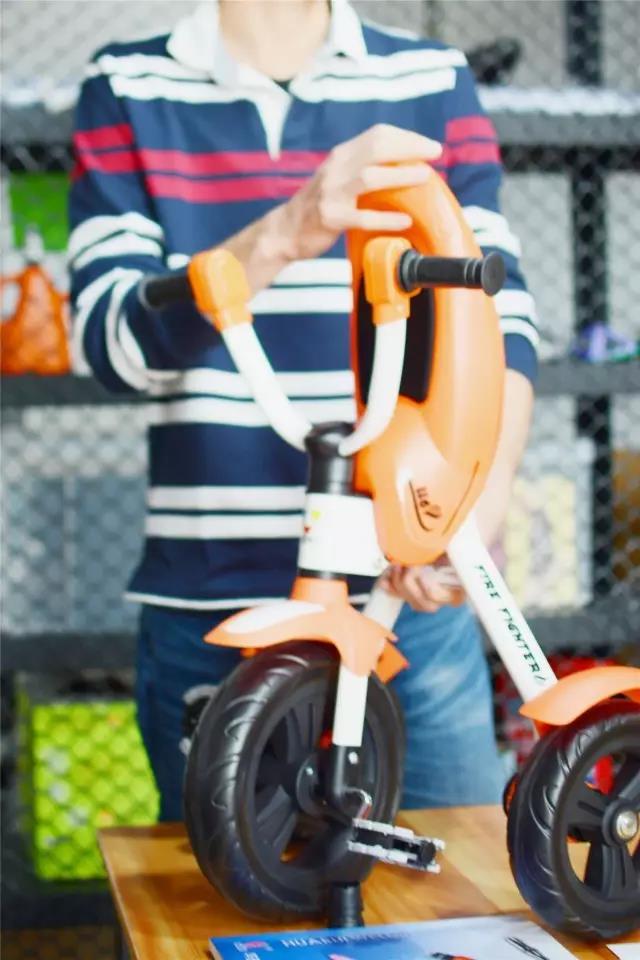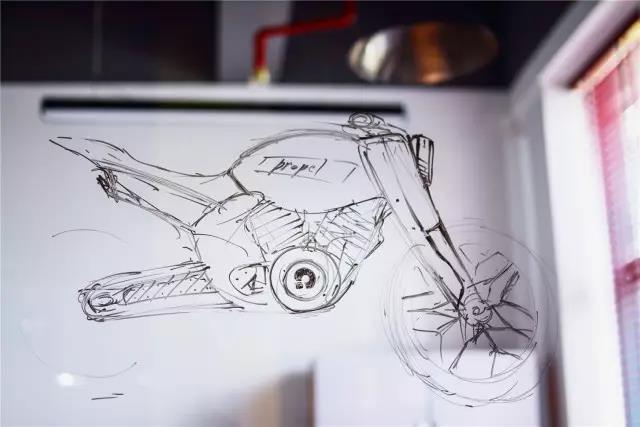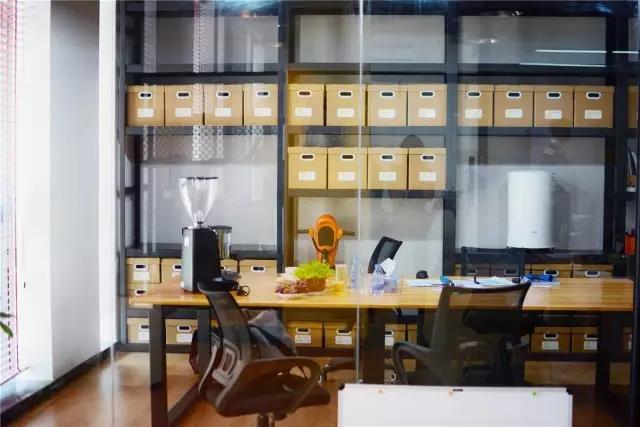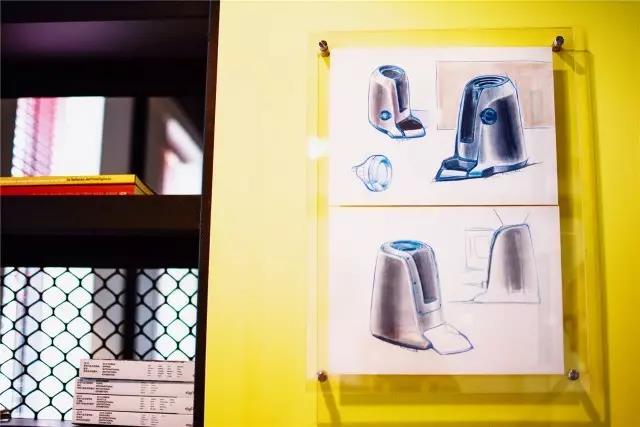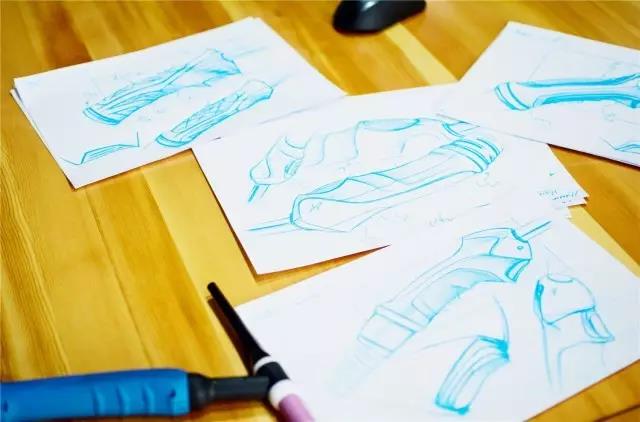Although China’s factories reign supreme over the world’s manufacturing industry, homegrown industrial design has had a slower cultivation. Over the past several years, there has been a push to change this, with China’s first-tier cities like Shanghai and Beijing leading the charge. Changzhou hasn’t been left out, though, and boasts its own burgeoning design industry, catering its services to companies locally and nationally. SupCZ managed to catch up with one young entrepreneurial industrial designer, Israel-born Roy Grinfeld, to learn more about the challenges of cultivating an international design practice beyond Shanghai’s reach.
尽管中国的工厂在世界制造业中占据着领导地位,但我们本土的工业设计却仍发展缓慢。在过去的几年里,中国一直在推动改变这一现状,其中中国的一线城市例如上海和北京是这一改变的领航者。然而,常州非但没有掉队,还拥有了自己蓬勃发展的设计产业,为当地乃至全国的公司提供服务。SupCZ团队联系上了一位年轻的企业家兼工业设计师——出生于以色列的罗伊·格菲尔德,以此来了解上海之外的其他地区是如何挑战培养国际设计师的。
Designed in China | 设计在中国
Tucked amid the monolithic buildings of Changzhou’s massive China-Israel Innovation Park, the office at Propel Design and Engineering Lab is bright, modern, and compact. Its CEO and founder, Mr. Grinfeld, is tall, lanky and prone to expansive gestures when describing the minute intricacies of his more technical projects. Mr. Grinfeld makes an energetic and passionate cheerleader for the benefits of his field: industrial design.
在常州宏伟的中国-以色列创新园区的整体建筑中,普洛派设计工程实验室的办公室明亮、设计充满现代感而又紧凑。它的首席执行官和创始人,格菲尔德先生,个子高大,身材纤瘦,在描述他的更多技术项目的细微之处时,不禁打起了手势,激动之情难以言喻。格菲尔德先生在他的领域——工业设计,充当着充满活力和激情的摇旗呐喊者。
Whenever I design something, I never take something and reshape it; I always add something new.
Mr. Grinfeld | 格菲尔德先生
每当我设计某样东西时,我从来不会简单的去改造它,我总是喜欢添加一些新鲜的元素!
Industrial design is more of an afterthought in the traditional Chinese engineering process than is typically the case in modern US and European practices. This approach to industrial design can be loosely summarized as what you do to make your product attractive after you’ve already figured out how to make your product do what you want it to do. This makes someone like Mr. Grinfeld, who possesses duel degrees in industrial design and engineering, a special kind of novelty. “It’s very difficult for me to separate function from aesthetics,” he confides.
在中国传统工程的推进过程中,工业设计相较于美国和欧洲,相对介入得比较晚。这使得工业设计简单概括为,在你已经了解如何将你的产品做成你预期的效果之后,再去考虑如何将你的产品设计的更具吸引力。这使得像格菲尔德先生这样拥有工业设计和工程学双学位的人,充满了新奇感和挑战。“对我来说,把美学和功能作用单独分开非常难!”他坦言道。
Journey to Changzhou | 常州之旅
Before arriving in China, Mr. Grinfeld spent 7 years studying in Italy, a country renowned for its design. Toward the end of his Master’s program, an opportunity for an internship with a Chinese company was offered, and he alone jumped at it. Ningbo was his first stop in China. An outdoorsy nature-lover, Mr. Grinfeld was taken with the city’s lakes and parks.
在来中国之前,格菲尔德先生花了七年时间在意大利,一个以设计闻名于世的国家学习,直至研究生毕业,他得到了一家中国公司的实习邀请,他毫不犹豫的接受了。宁波是他来中国的首站。作为户外运动和大自然的爱好者,格菲尔德先生被这座城市的公园和湖泊深深吸引。
It was in Ningbo, that Mr. Grinfeld eventually met Ilan Maimon, a successful Israeli entrepreneur and engineer, heading up Elan Industries, maker of HeyCafe commercial coffee grinders for worldwide distribution. Mr. Grinfeld’s opinion of Mr. Maimon is high, “Ilan is a great businessman and great man, also.” Mr. Maimon was the one to encourage Mr. Grinfeld to start up a design studio in the first place. Changzhou, home to the largest concentration of Israeli companies in China was an ideal location to set up shop, and soon Mr. Grinfeld even had the chance to try his hand at redesigning some of HeyCafe’s bestselling grinders.
就是在宁波,格菲尔德先生与伊兰·迈——一名成功的企业家和工程师,Elan工业的领军人,遍布全球的HeyCafe商业咖啡研磨机的制造商相识。格菲尔德先生对迈先生的评价很高,称赞道,“伊兰是一名伟大的商人,他为人也很好。” 正是迈先生最初就鼓励格菲尔德先生成立自己的设计室。常州,作为最大的以色列公司集中地,是成立工作室的理想选择。很快,格菲尔德先生甚至有幸可以试着重新设计一些HeyCafe最畅销的咖啡研磨机。
Fandom Comes in Many Forms | 艺术的形式多种多样
Mr. Grinfeld has been fortunate in his collection of clients. For each project, he has a story about the seriousness, engineering acumen, or appreciation for innovative design of the company behind it. “I think now we’re seeing the evolution of the Chinese market…” He says, “Chinese society as well.”
格菲尔德先生一直特别幸运。每一个项目的委托公司,要么严谨,带有敏锐的眼光,要么特别欣赏创新的设计。“我认为我们正见证着中国市场的演变…” 他说,“当然也包括中国社会的演变。”
For all his optimism toward the future of China’s industrial design industry, Mr. Grinfeld has first-hand experience with copycats. At a recent toy expo, Mr. Grinfeld was surprised to run across numerous replicas of the folding trike he had designed for that Ningbo company. Some of the copies were so exact, they even included imperfections that Mr. Grinfeld acknowledges exist in his original design that he would have removed given more time. While it’s easy to grumble over this blatant disregard for intellectual property, Mr. Grinfeld has another take, “For me, it’s great that they copy… It shows that if they invest in new design, if they invest in new products, it will come back to them.” From his point of view, the copiers act like billboards advertising the integrity of the original idea.
尽管他对中国工业设计的未来充满着期待和信心,格菲尔德先生也有过被仿造的经历。在最近的一次玩具博览会上,格菲尔德先生惊讶地看到了当初他为宁波那家公司设计的三轮车仿造品。有些仿造品甚至惊人得精确,甚至包括格菲尔德先生来不及修改的最初设计稿中的一些小缺陷。虽然通常情况下会抱怨这种漠视知识产权的现象,但是格菲尔德先生有他自己的见解,“对我来说,他们有能力仿造,这也很好。至少说明了,他们在新设计中的投资,或者在新产品中的投资,总会有回报。”在他看来,仿造者就像广告牌一样,为最初的设计者在打广告。
Where the Designers Go | 设计师们该何去何从
To get a sense of how attitudes about Industrial Design are changing in Changzhou and Jiangsu province, we tracked down Bo Yan, Director of Hohai University’s Industrial Design Department. He agreed with Mr. Grinfeld’s assessment of the changing attitudes toward Industrial Design in China, although for someone charged with educating the next generation of designers in a country renowned for its rate of change, Mr. Yan finds the speed at which change is occurring in his industry to be relatively slow.
为了了解常州乃至整个江苏省对于工业设计的态度,我们找到了河海大学工业设计学院负责人严波。他非常赞同格菲尔德先生对于正在转变的中国工业设计观念的评价,虽然有人肩负着教育下一代设计师慢慢成名的重担,严教授觉得观念的改变相对于工业的发展还是相对缓慢。
In Jiangsu Province, there is an emphasis on machine design. This makes sense given Jiangsu’s massive manufacturing industry. The government supports the province’s industrial design through expos and design competitions. The pull of nearby Shanghai, however, is great, and many designers-in-training flee to the megatropolis when they finish their studies. This poses a problem for companies like Propel. Mr. Grinfeld cited sourcing promising designers as the chief challenge for his company.
在江苏省,工业机器的设计是重头。所以江苏有着庞大的制造业是有些道理的。政府通过设计竞赛来支持本省的工业设计的发展。然而,来自上海的吸引力还是很大,很多设计人员在他们完成学业后就去了大城市发展。这对于像格菲尔德先生的Propel公司来讲,就是个问题。格菲尔德先生面临的主要挑战就是寻找稳定的设计师。
Acquiring clients locally can also be difficult for design studios operating out of Changzhou. With a dearth of big name design firms in town, many companies look to Shanghai, Beijing, or even abroad for their design needs, wooed by the allure of a famous name. “That’s a problem here,” he says, “A lot of companies look somewhere else.” Ironically, Mr. Grinfeld spends much of his time travelling to cities like Shanghai, Ningbo, and Tianjin for meetings with clients. Mr. Grinfeld has really enjoy the occasional opportunities he’s had to work for local clients, and waxes on whimsically about how nice it would be to have more clients that don’t require long hours logged on trains or planes for meetings.
在常州本地也很难招揽到客户。由于常州知名的设计公司并不多,很多公司有设计需求的时候,一味追逐那些有名的设计公司,都把目光投向了上海、北京甚至于国外。“这对于常州本地的设计公司来说就是个考验,” 他说,“很多设计公司无奈只能去别的地方寻找客户。”更讽刺的是,格菲尔德先生大多数时间都要赶往上海,宁波,天津等大城市去见他的客户。格菲尔德先生很珍惜偶尔为常州当地的客户工作的机会,他也很希望要是能在常州当地有更多的客户就好了,而不是经常花大量时间出差。
Mr. Grinfeld would love to head up a major effort to increase local awareness of Changzhou’s designers. Not only would this benefit his company and others like it by encouraging designers to stick around, but it would have the potential to legitimize Changzhou designers in the eyes of potential clients in the city and beyond, hunting for someone capable of turning their product into the next trendsetter in its class.
格菲尔德先生很乐意献身于提高常州设计师的本地意识。这不仅仅能让他自己的公司获益,同样也鼓励了设计师留在常州,进而寻求本地的潜在客户,寻找那些渴望让他们的产品成为下一个潮流的人们。
Article & photos by Theresa Boersma
Translated by Rachel Ling

